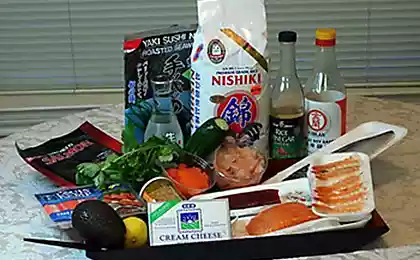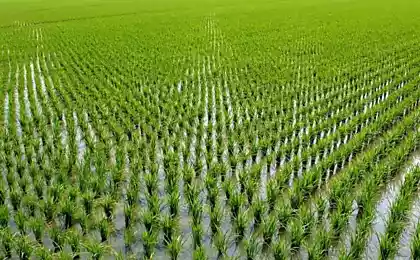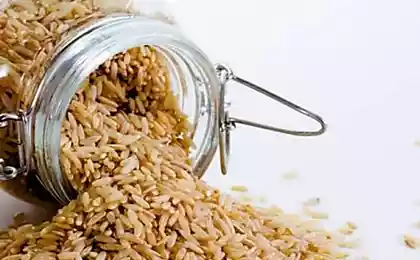1678
National characteristics of rice cultivation in Bali
Rice is one of the oldest and most popular food crops in the world. Its domestication occurred nearly 9,000 years ago, and since then the figure has firmly established itself in the diet of almost half the world's population. The island of Bali, which is part of Indonesia - is no exception. On the fertile volcanic soils Bali, almost all suitable parcels planted with rice. Most of the water goes to irrigate fields and terraces. Due to the dissected relief of the island, mainly in the rice-growing developed deforested, flat areas.

In the mountain areas, rice is grown on terraces that are built on mountain slopes and fenced off special rolls of clay for water retention. Very popular among tourists enjoy the terrace in the center of the island Tegallalanga.

Sometimes you can see dozens of levels filled with water. It is a real miracle, many irrigation canals there are hundreds of years old, and surprisingly, even if people can not ingenious technical devices necessary to calculate the pressure and quantity of water for each field.


On the plains are common - heavy paddy fields. They are flat and evenly irrigated by a simple system of canals.
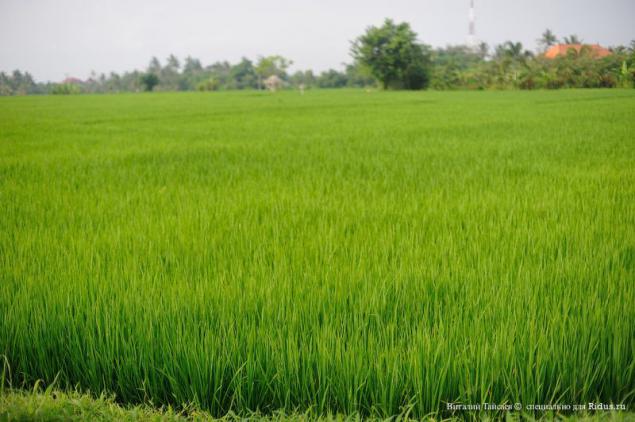
In some cases, you can adjust the flow of water through a network of dams and dikes with such dodgy bars.

But the most amazing thing in the rice fields of Bali - is "Subak". "Subak" - a cooperative of farmers who live in the same irrigation district and engaged in the distribution of water in the fields. It can be one to several villages, and perhaps so that in one village there are several cooperatives - it all depends on the irrigation scheme in this particular place (for "Subaku" belong to all those who take the water to their fields of some one place - whether it is the source, the channel or river). They have dogovorivatsya each other and coordinate their efforts - or their family will die of hunger. In 2012 - "Subak" was declared a heritage site.

Not surprisingly, the highly spiritual culture of the Balinese rice cultivation is not spared side. Quite often you can see the small temples. Most Balinese offerings directed to the goddess Dewi Sri, who is the goddess of fertility:

Because of the soft and pronounced seasonal climate, vegetation period of ripening rice is almost not expressed. A year passes 3-4 harvest.

Figure removed and inoculated almost always manually. Salary workers averages about $ 50 per month. This is not the lowest salary, with which I have come across.

Before planting rice grains germinated in special beds, and 1-2 months after transplant in bunches of 3 germ in the soil of heavy field covered with water.

Ripe rice attracts not only views of curious tourists, but hungry birds. To protect their crops, the local population makes frightened, or pulls the rope over the field with pieces of white fabric or foil.

Bali is very narrow roads and farm equipment almost never used. Occasionally use of draft animals for plowing the fields.

And here begins the harvest. To begin with ears cut with a sickle.

This process is called threshing, cut shoots matured rice hit a wooden board. It is important to tighten the net on three sides to figure flew precisely to cart.

Grains fall into the basket, and then dried in the sun. In the first treatment step was removed rice husks, which protect corn from damage. Unharvested rice husks - red rice. It consists of whole grains of rice, it is nutritious bran shell, which gives it a distinctive brown color and nutty flavor. Red rice - very useful, but the white is cooked much longer and do not fall apart.
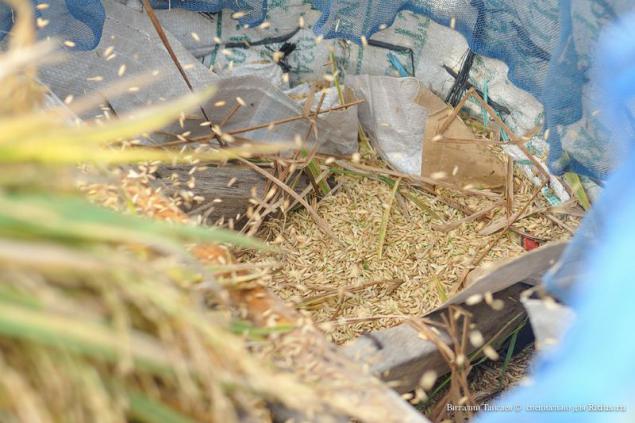
And it is ready for further processing in Fig.

Taste the quality of rice to the island a little bit different and depend primarily on the area where he was grown.

What happens to the field? First, on motorcycles brought a whole horde of ducks that eat parasites and insects in the fields. For ducks - it is a feast for the whole world. If you live in the middle of rice fields, when it gets dark to light is flying a huge number of bugs. To be frank, it's not very nice. However, for the ducks, who revel in the fields - it is a holiday. Within a few days they are kept on the field, and then driven into the basket and driven to another field. After seasons of vegetation here is not particularly pronounced and eat feathered, there always!

The next time you do ordinary rice porridge, Uzbek pilaf or risotto delicious, imagine what an amazing journey full of adventures, could pass every grain of rice before you turn on your desk!
Source: vtaysaev.livejournal.com

In the mountain areas, rice is grown on terraces that are built on mountain slopes and fenced off special rolls of clay for water retention. Very popular among tourists enjoy the terrace in the center of the island Tegallalanga.

Sometimes you can see dozens of levels filled with water. It is a real miracle, many irrigation canals there are hundreds of years old, and surprisingly, even if people can not ingenious technical devices necessary to calculate the pressure and quantity of water for each field.


On the plains are common - heavy paddy fields. They are flat and evenly irrigated by a simple system of canals.

In some cases, you can adjust the flow of water through a network of dams and dikes with such dodgy bars.

But the most amazing thing in the rice fields of Bali - is "Subak". "Subak" - a cooperative of farmers who live in the same irrigation district and engaged in the distribution of water in the fields. It can be one to several villages, and perhaps so that in one village there are several cooperatives - it all depends on the irrigation scheme in this particular place (for "Subaku" belong to all those who take the water to their fields of some one place - whether it is the source, the channel or river). They have dogovorivatsya each other and coordinate their efforts - or their family will die of hunger. In 2012 - "Subak" was declared a heritage site.

Not surprisingly, the highly spiritual culture of the Balinese rice cultivation is not spared side. Quite often you can see the small temples. Most Balinese offerings directed to the goddess Dewi Sri, who is the goddess of fertility:

Because of the soft and pronounced seasonal climate, vegetation period of ripening rice is almost not expressed. A year passes 3-4 harvest.

Figure removed and inoculated almost always manually. Salary workers averages about $ 50 per month. This is not the lowest salary, with which I have come across.

Before planting rice grains germinated in special beds, and 1-2 months after transplant in bunches of 3 germ in the soil of heavy field covered with water.

Ripe rice attracts not only views of curious tourists, but hungry birds. To protect their crops, the local population makes frightened, or pulls the rope over the field with pieces of white fabric or foil.

Bali is very narrow roads and farm equipment almost never used. Occasionally use of draft animals for plowing the fields.

And here begins the harvest. To begin with ears cut with a sickle.

This process is called threshing, cut shoots matured rice hit a wooden board. It is important to tighten the net on three sides to figure flew precisely to cart.

Grains fall into the basket, and then dried in the sun. In the first treatment step was removed rice husks, which protect corn from damage. Unharvested rice husks - red rice. It consists of whole grains of rice, it is nutritious bran shell, which gives it a distinctive brown color and nutty flavor. Red rice - very useful, but the white is cooked much longer and do not fall apart.

And it is ready for further processing in Fig.

Taste the quality of rice to the island a little bit different and depend primarily on the area where he was grown.

What happens to the field? First, on motorcycles brought a whole horde of ducks that eat parasites and insects in the fields. For ducks - it is a feast for the whole world. If you live in the middle of rice fields, when it gets dark to light is flying a huge number of bugs. To be frank, it's not very nice. However, for the ducks, who revel in the fields - it is a holiday. Within a few days they are kept on the field, and then driven into the basket and driven to another field. After seasons of vegetation here is not particularly pronounced and eat feathered, there always!

The next time you do ordinary rice porridge, Uzbek pilaf or risotto delicious, imagine what an amazing journey full of adventures, could pass every grain of rice before you turn on your desk!
Source: vtaysaev.livejournal.com




